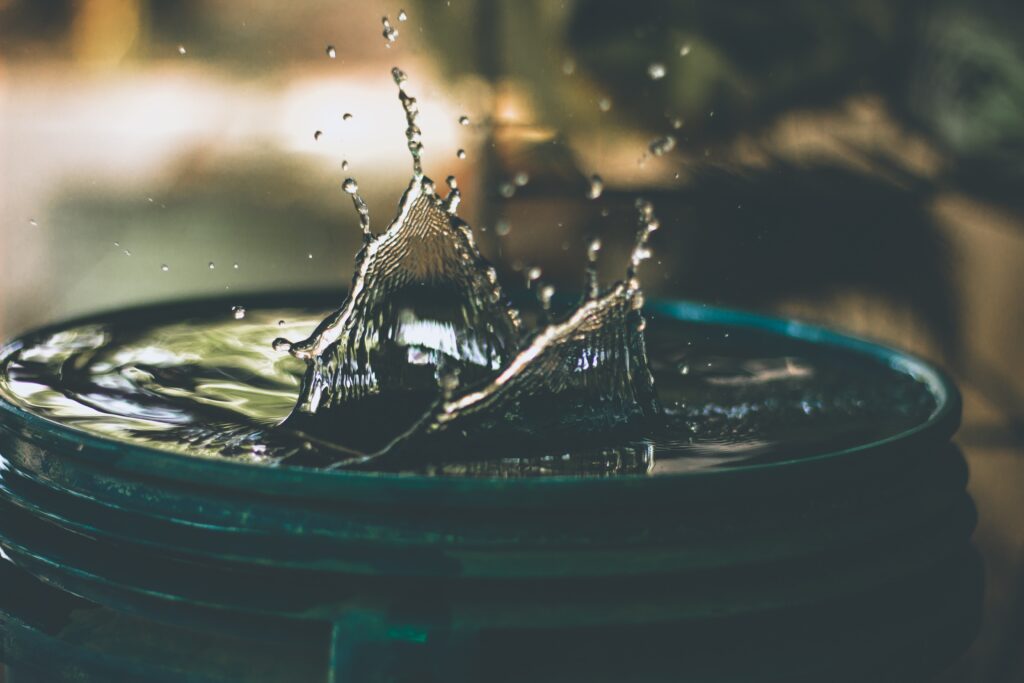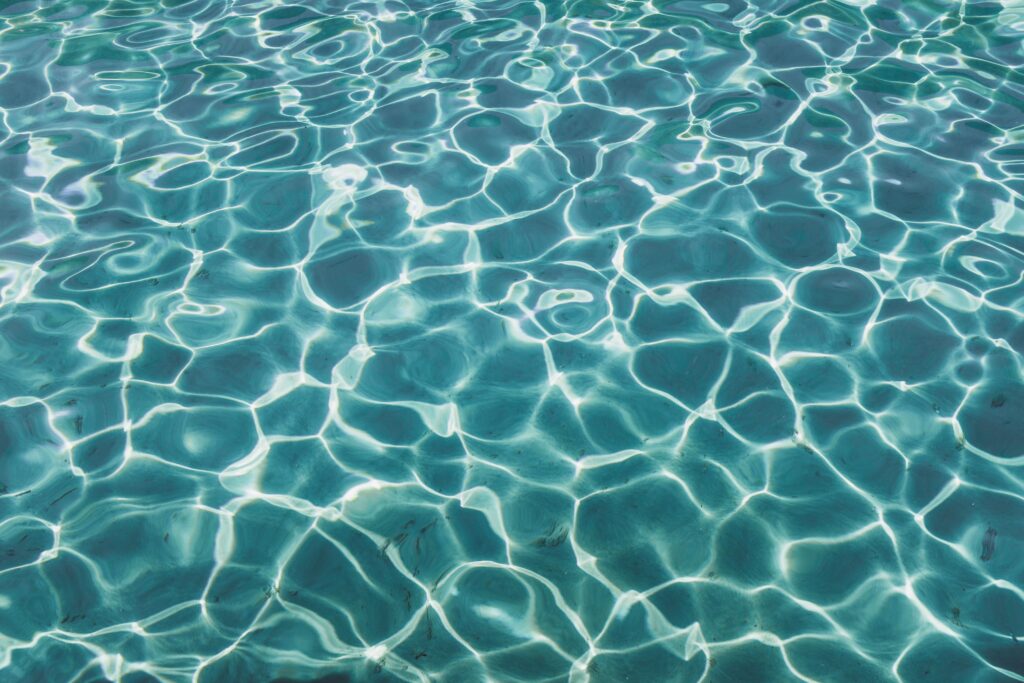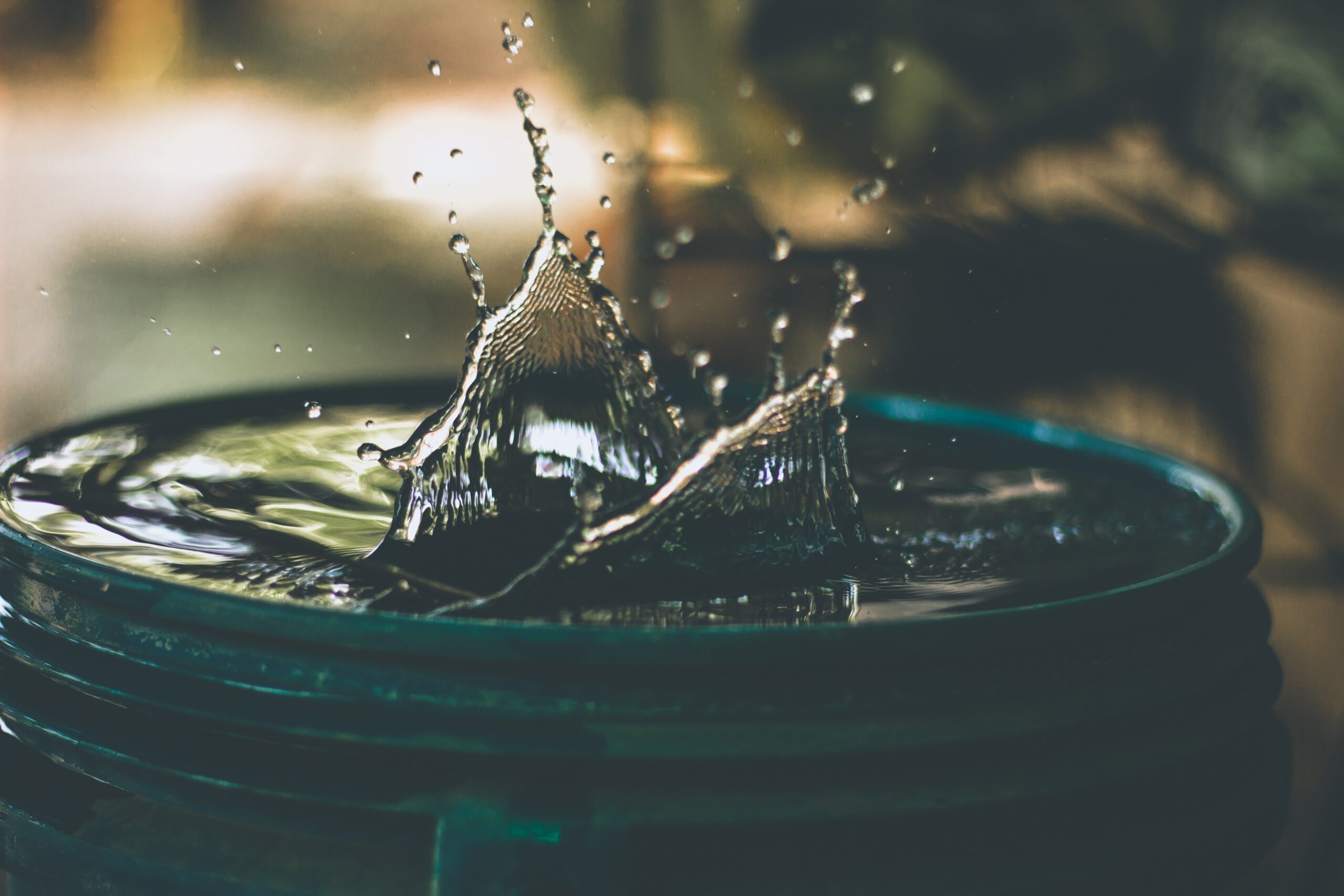The presence of water is not just aesthetically pleasing but holds a deeper significance in Japanese culture. In this introductory guide, we will explore the various water elements found in Japanese gardens, from serene ponds and cascading waterfalls to traditional Tsukuba and stone basins. Join us as we uncover the artistry and symbolism behind these essential features that contribute to the timeless beauty of Japanese gardens.
1. History of Japanese Gardens
Japanese gardens have a rich history that dates back centuries. These carefully crafted environments are more than just beautiful landscapes – they are a reflection of Japan’s culture, history, and spirituality. Understanding the origins and evolution of Japanese gardens can help us appreciate the significance and beauty of their water elements.
1.1 Origins of Japanese Gardens
The origins of Japanese gardens can be traced back to the Asuka period (538-710), when Japan was heavily influenced by Chinese culture and Buddhism. In the beginning, gardens were created mainly as places for religious and imperial ceremonies.
However, it was during the Heian period (794-1185) that the concept of Japanese gardens truly began to flourish. The introduction of noble residences and villas provided opportunities for the development of exquisite gardens. These gardens became reflections of nobility and sought to recreate the natural beauty of the surrounding landscapes.
1.2 Evolution of Water Elements in Gardens
Water elements have always been an essential component of Japanese gardens. They symbolize the life force and bring harmony to the natural surroundings. Over time, the use of water in gardens evolved, reflecting changing aesthetic preferences and philosophical beliefs.
Previously, gardens predominantly featured ponds and lakes, creating serene and reflective surfaces that mirrored the beauty of the surrounding nature. Streams and waterfalls were also introduced, representing the dynamic and ever-changing nature of life.
The concept of the tsukubai, a stone basin with a water source, came into prominence during the medieval period. Tsukubai were not only functional for ritual purification but also served as elements of aesthetic beauty.
As gardens flourished during the Edo period (1603-1868), water jars and fountains were introduced, adding a touch of elegance and tranquility to the landscape. Water jars, called mizubachi, were often placed near tea houses or seating areas, providing a source of calm contemplation.
2. Philosophy and Symbolism in Japanese Gardens
Japanese gardens are more than just picturesque landscapes; they are deeply rooted in philosophy and symbolism. Understanding the underlying principles can help us truly appreciate the beauty and intent behind the water elements in these gardens.
2.1 Zen Buddhism and Its Influence
The influence of Zen Buddhism on Japanese gardens cannot be overstated. Zen philosophy emphasizes the importance of simplicity, tranquility, and harmony with nature. This philosophy is reflected in the design and arrangement of Japanese gardens.
Water elements play a crucial role in creating a sense of calm and serenity. The stillness of a pond or the gentle flow of a stream encourages contemplation and meditation, allowing individuals to connect with their inner selves and find peace in a hectic world.
2.2 Water as a Symbol of Life and Vitality
In Japanese culture, water is seen as a symbol of life, purity, and vitality. It represents the life force that sustains all living beings. Incorporating water elements in gardens is a way to honor and pay homage to this powerful symbol.
Waterfalls, for example, are often used to represent the energy and power of nature. The sound of cascading water creates a soothing and meditative atmosphere, fostering a sense of rejuvenation and vitality.
Ponds and lakes, with their still and reflective surfaces, symbolize tranquility and introspection. The mirror-like quality of the water allows individuals to see themselves and gain a deeper understanding of their own nature.

3. Types of Water Elements in Japanese Gardens
Japanese gardens feature a variety of water elements, each with its own unique character and purpose. Understanding the different types of water elements can help us appreciate their diverse roles in the overall design of a garden.
3.1 Ponds and Lakes
Ponds and lakes are perhaps the most iconic water elements in Japanese gardens. They serve as focal points, reflecting the surrounding scenery and creating a sense of calm and tranquility.
These bodies of water often feature beautiful aquatic plants and ornamental fish, further enhancing their beauty. Islands and bridges may be incorporated into the design, providing opportunities for exploration and creating visual interest.
3.2 Streams and Waterfalls
Streams and waterfalls bring movement and energy to a garden. They represent the ever-changing flow of life and evoke a sense of dynamism and vitality.
Streams meander through the landscape, creating a sense of discovery and encouraging visitors to explore the garden at their own pace. Waterfalls, on the other hand, provide a dramatic focal point and create a mesmerizing soundscape that adds to the overall sensory experience.
3.3 Tsukubai (Stone Basin)
The tsukubai is a traditional Japanese stone basin with a water source. It is often found near tea houses or seating areas in Japanese gardens.
Tsukubai serve both practical and aesthetic purposes. They are used for ritual purification before tea ceremonies, symbolizing the importance of cleanliness and mindfulness. Additionally, the rhythmic sound of the water dripping into the basin creates a calming ambiance.
3.4 Water Jars and Fountains
Water jars and fountains are more commonly seen in contemporary Japanese gardens. They add a touch of elegance and provide a source of visual and auditory delight.
Water jars, known as mizubachi, are often placed near seating areas, inviting visitors to sit and contemplate. Fountains, with their graceful water sprays and gentle sounds, create a soothing atmosphere and contribute to the overall tranquility of the garden.
4. Design Principles of Water Elements
Water elements in Japanese gardens are not randomly placed; they are carefully designed to create a harmonious and pleasing aesthetic. Several design principles guide the placement and arrangement of these elements.
4.1 Balance and Harmony
Balance and harmony are fundamental principles in Japanese garden design, and these principles extend to the placement of water elements. They should be integrated seamlessly into the overall landscape, creating a sense of unity and tranquility.
Whether it’s a large pond or a small water jar, the placement of water elements should be carefully considered to achieve visual balance. They should complement the surrounding vegetation and structures, creating a harmonious composition that feels natural and effortless.
4.2 Natural and Organic Shapes
Japanese gardens are known for their emphasis on natural and organic forms. Water elements should reflect this design philosophy by incorporating curved lines, irregular shapes, and natural-looking materials.
Ponds and streams, for example, mimic the meandering path of rivers and capture the essence of nature’s flow. Waterfalls are designed to resemble natural cascades, with rocks carefully arranged to create a sense of authenticity.
4.3 Reflections and Mirroring Effects
Reflections and mirroring effects are an integral part of Japanese garden design. Still water surfaces, such as ponds and lakes, provide an opportunity for captivating reflections.
These reflections not only enhance the visual appeal of the garden but also create a sense of depth and spaciousness. They add an element of mystery and intrigue, captivating visitors and inviting them to explore further.

5. Use of Water Elements in Different Garden Styles
Water elements are utilized in various garden styles in Japan, each with its own unique characteristics and purposes. Understanding these styles can inspire us to incorporate water elements into our own gardens in a meaningful way.
5.1 Strolling Gardens (Kaiyū-shiki Teien)
Strolling gardens, also known as kaiyū-shiki teien, are designed to be enjoyed by walking through them. These gardens typically feature a central pond, which serves as the focal point and allows visitors to experience different perspectives as they stroll along winding paths.
The water elements in strolling gardens are carefully positioned to create picturesque views from various angles. Islands, bridges, and stepping-stones provide opportunities for exploration and create visual interest.
5.2 Dry Landscape Gardens (Karesansui)
In contrast to the lush greenery and flowing water of strolling gardens, dry landscape gardens, also known as karesansui, rely on rocks, gravel, and sand to create a minimalist and contemplative atmosphere.
Water elements in karesansui are represented symbolically. Raked gravel or sand may be used to simulate the flow of water, creating a sense of movement and tranquility. This metaphorical representation invites viewers to use their imagination and connect with the essence of water.
5.3 Tea Gardens (Rōji)
Tea gardens, or rōji, are an integral part of the Japanese tea ceremony. These small, intimate gardens are designed to create a sense of tranquility and prepare visitors for the tea ceremony experience.
Water elements in tea gardens, such as tsukubai, serve a practical and symbolic purpose. They provide water for ritual purification before the tea ceremony and symbolize purity and mindfulness. The sound of the water dripping into the basin creates a serene ambiance, helping visitors to clear their minds and focus on the ritual.
6. Maintenance and Care of Water Elements
Maintaining the beauty and functionality of water elements in Japanese gardens requires proper care and maintenance. Several aspects need to be considered to ensure the longevity and health of these elements.
6.1 Water Quality Management
Maintaining the quality of the water is essential for the health of aquatic plants and fish in ponds and lakes. Regular testing and treatment of the water can help prevent excessive algae growth and maintain a healthy ecosystem.
Appropriate filtration systems and aeration devices can also be installed to improve water quality. These mechanisms promote oxygenation and circulation, creating a healthier environment for aquatic life.
6.2 Algae and Plant Control
Algae growth is a common issue in water elements, especially in ponds and lakes. Excessive algae can not only affect the aesthetic appeal of the garden but also disrupt the balance of the ecosystem.
Regular monitoring and control of algae growth through methods like manual removal, the use of beneficial bacteria, or the addition of aquatic plants can help keep the water clean and clear.
Proper plant maintenance is also crucial for the health and vitality of the garden. Regular pruning, removing dead leaves, and controlling invasive plants will ensure that the water elements remain visually appealing and do not become overgrown.
6.3 Seasonal Maintenance
Water elements require specific care during different seasons. In colder climates, it is essential to protect water elements from freezing temperatures to prevent damage.
During the fall season, regular cleaning and removal of fallen leaves are important to maintain water quality and prevent blockages. Spring and summer require monitoring and adjustments to keep the water elements in balanced conditions.
Regular maintenance and care will help preserve the beauty and functionality of water elements in Japanese gardens, allowing them to thrive for years to come.

7. Cultural Significance and Rituals
Water holds a significant place in Japanese culture and is deeply intertwined with mythology and ancient rituals. Understanding the cultural significance and rituals associated with water can deepen our appreciation for the use of water elements in Japanese gardens.
7.1 Water in Japanese Mythology
Water has a prominent role in Japanese mythology, representing divine forces and spiritual purity. Ancient Japanese folklore is filled with stories of gods and goddesses associated with water, and many natural features, such as waterfalls and springs, are considered sacred.
The use of water elements in Japanese gardens pays homage to these mythological beliefs and creates a connection to the divine. They serve as a reminder of the spiritual and sacred nature of water.
7.2 Tea Ceremony and Water Elements
The tea ceremony, or chado, is a traditional Japanese ritual that emphasizes harmony, reverence, and mindfulness. Water plays a crucial role in the tea ceremony, symbolizing purification and the essential element that creates the perfect cup of tea.
Water elements, such as tsukubai, are integral to the tea garden, where visitors cleanse themselves before participating in the tea ceremony. The act of scooping water from the basin and pouring it over one’s hands is a symbolic gesture that signifies entering a purified state of mind.
The inclusion of water elements in tea gardens creates a serene and contemplative atmosphere, preparing participants for the ritual and enhancing their overall sensory experience.
8. Famous Water Gardens in Japan
Japan is home to numerous breathtaking water gardens that showcase the beauty and mastery of Japanese garden design. Some of the most famous water gardens in Japan are:
8.1 Kenroku-en Garden
Located in Kanazawa, Kenroku-en Garden is one of Japan’s most celebrated gardens. Its central feature is a large pond called Kasumigaike, surrounded by meticulously manicured landscapes, teahouses, and walking trails. The gentle flow of the water and the reflections on the pond’s surface create a serene and picturesque ambiance.
8.2 Katsura Imperial Villa Gardens
The gardens of the Katsura Imperial Villa in Kyoto are regarded as the epitome of Japanese garden design. These gardens are known for their subtle and harmonious water elements, including ponds, streams, and tea gardens. Every detail of the water features is carefully designed and arranged to create a sense of tranquility and balance.
8.3 Ritsurin Garden
Ritsurin Garden in Takamatsu is a masterpiece of Japanese garden design and is considered one of the best examples of a strolling garden. The gardens feature numerous ponds, streams, and waterfalls, which are skillfully integrated into the landscape. The water elements add depth and visual interest, inviting visitors to immerse themselves in the beauty of their surroundings.
9. Incorporating Water Elements in Personal Gardens
The allure of Japanese gardens and their water elements is not limited to Japan alone. Many garden enthusiasts aspire to recreate the essence of Japanese gardens in their own spaces.
9.1 Size and Space Considerations
When incorporating water elements into personal gardens, it is important to consider the available space and size restrictions. A large pond may not be feasible in a small backyard, but a small water jar or a carefully designed stream can still create a sense of tranquility and beauty.
Adapting the principles and aesthetics of Japanese garden design to fit the available space will ensure a harmonious integration of water elements into your personal sanctuary.
9.2 Selecting Suitable Water Features
Selecting suitable water features is essential to match the theme and style of your garden. Consider the overall design aesthetic and the desired purpose of the water element before making a choice.
If you desire a serene and reflective atmosphere, a small pond or a still water feature may be ideal. For a more dynamic and energetic ambiance, a small waterfall or a cascading stream could be the perfect addition.
9.3 Creating a Tranquil Atmosphere
Creating a tranquil atmosphere goes beyond selecting and placing water elements in your garden. Pay attention to the surrounding vegetation, seating areas, and pathways, ensuring they complement the water features and contribute to the overall serenity.
Strategically placed rocks, carefully chosen plants, and comfortable seating areas can enhance the overall ambiance, encouraging relaxation and contemplation.
10. Conclusion
Water elements have always played a central role in Japanese gardens, representing life, tranquility, and spirituality. Understanding the history, philosophy, and symbolism behind these elements deepens our appreciation for their beauty and significance.
Whether it’s a strolling garden with a central pond, a dry landscape garden with symbolic representations, or a tea garden with a tsukubai, water elements enhance the overall aesthetic and sensory experience of Japanese gardens.
By incorporating water elements into your own garden, you can create a tranquil sanctuary that reflects Japanese design principles and allows you to immerse yourself in the beauty and serenity of nature.








